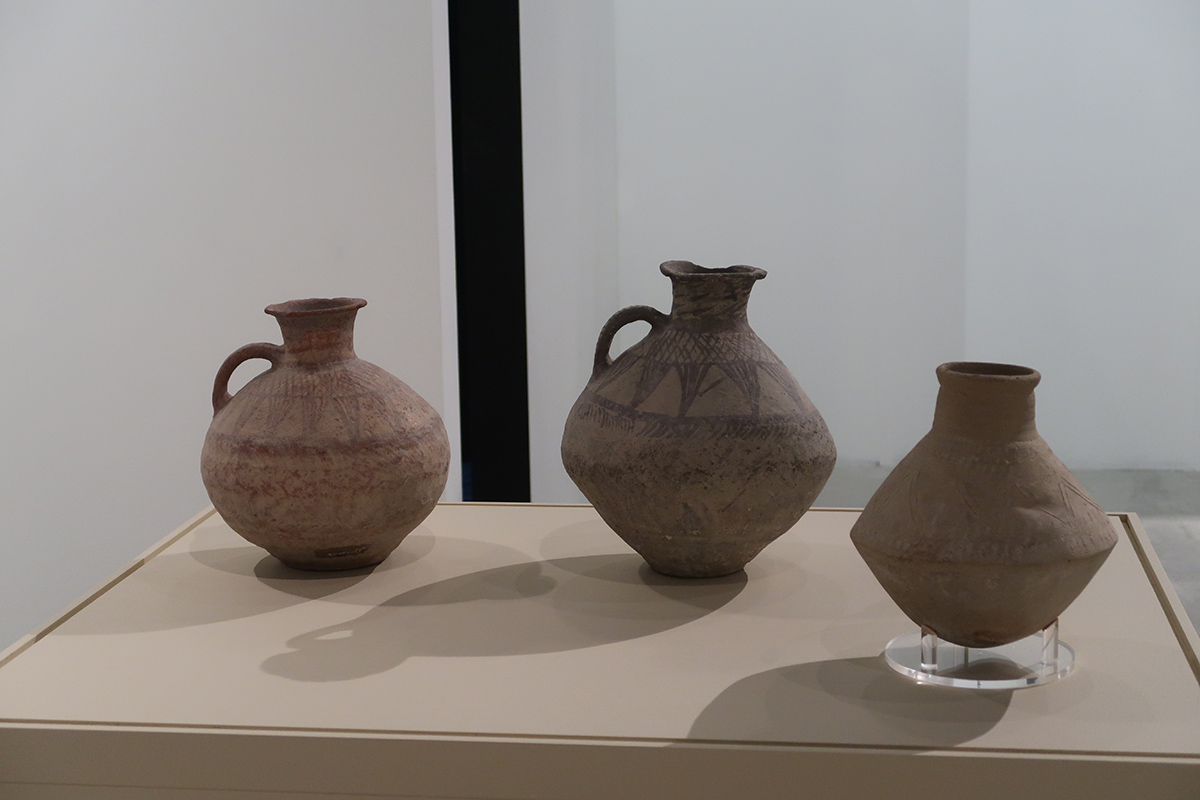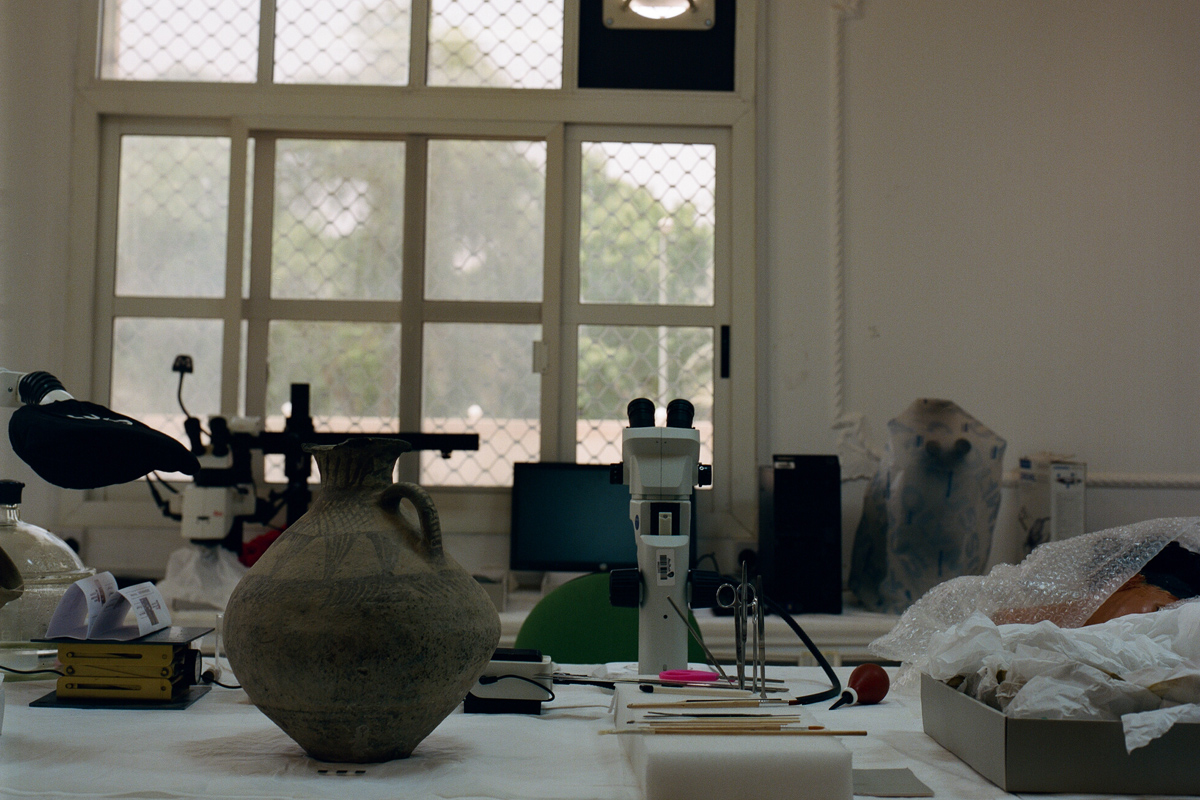By Sarah Collins
Senior Curator, DCT Abu Dhabi
The Sahwa photographs of Lamya Gargash were first shown in the Abu Dhabi Art 2019 Gateway exhibition ‘Fragments, Yesterday and Today’, curated by Paolo Colombo. The exhibition juxtaposed archaeological and ethnographic artefacts from the Al Ain Museum with contemporary artists’ works. Exhibiting modern or contemporary art together with ancient artefacts is an effective engaging way to meet the curatorial challenge of how to encourage exhibition viewers to feel a connection between their own lives and these historic artefacts

In the Gateway exhibition, the Sahwa images provided a visually striking and direct illustrative link between the museum objects and contemporary art practice, while contributing to the overarching exhibition narrative. That is not to imply that these photographs are best appreciated within the context of that exhibition. Fundamentally, they are beautiful and they depict narratives not only significant to Gargash and her body of work but which also speak to many wherever they are viewed. The intention here is to provide some background on what can be seen in the photographs and why they are exceptional in terms of their content.
The Al Ain Museum, established by the late Sheikh Zayed bin Sultan Al Nahyan, Founding Father of the UAE, is located within the area of Al Ain in Abu Dhabi emirate designated as a UNESCO World Heritage Site. Since its inauguration on 30 November 1971, the museum has preserved and exhibited the human history of Abu Dhabi and the United Arab Emirates. It is now time for renovation and, while the museum is closed, the artefacts selected for future display are undergoing conservation treatment.
In her photographs, Gargash captures a transient and idiosyncratic phase of the Al Ain Museum renovation project, during which the living room of a large villa in Al Ain was transformed into a temporary conservation laboratory. The artefacts destined for the Gateway exhibition were among the first objects to be conserved in this space, before the delivery of additional laboratory equipment and furniture. While this wouldn’t seem like the right time to welcome any photography of ‘behind the scenes’ museum work for public view, it was inadvertently completely appropriate that this unusual location for conservation was viewed through the lens of Gargash, with her interest in documenting spaces.
Conservation is one of the core functions of a museum; it is crucial for the mission of ensuring longevity of artefacts and preserving them for the future. However, the conservation of objects is rarely the narrative focus of contemporary art. For various reasons, not least of which is collections security, the work of conservators who prepare artefacts for an exhibition usually goes unseen by the public. Photography is, in fact, an important aspect of conservation documentation. The photos taken by conservators become part of the ‘permanent record’ or archive of the history of the object through time. Gargash is also preserving history through photography and, in this case, by photographically recording the work of others who preserve history. Furthermore, the everyday tools of the conservators — microscopes, bottles and jars, scalpels, scissors and brushes, are highlighted in Sahwa as if to remind us that these too will one day be historical artefacts in need of preservation.

Ceramic vessels and metal items dating from the early to mid-20th century were undergoing conservation treatment when the Sahwa photographs were taken. Some of these ethnographic objects had been in collections storage and were about to be exhibited for the first time. Others were displayed in the Al Ain Museum for almost 50 years and in need of restorative treatment. In the photographs, we can see water containers with geometric motifs, silver dip pens, a brass container with an inkwell and spikey silver bracelets. Two items of jewellery – an amuletic necklace with coins and hirz Qur’an case, and an ornate silver headdress, can be partly seen but are mostly hidden by protective tissue paper (Untitled 4 & 5).
The eye-catching mannequin head was the mount or display prop for the silver headdress when it was exhibited in the Al Ain Museum. Several ‘heritage’ narratives were illustrated for visitors to the museum by painted plaster mannequins, mostly full size and permanently posed in a stance appropriate to the task they exemplify. In modern museum design, mannequins of this type are now considered to be too old-fashioned to be a useful method of interpretation, so they are being phased out of use. The mannequin head was somewhat humanised during its conservation by the discovery of a sticker with the name Moza on it, possibly written by the maker. In Sahwa, Moza is the star artefact of the show. Far from being merely a support for the silver headdress or a testament to the history of museology, she is appreciated and deserving of an audience. From the point of view of a museum curator, there is wonderful power in Gargash’s skill of drawing attention, highlighting values and narrating history through her art.



